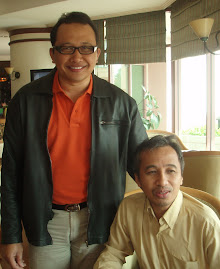From Wikipedia
| Saraswati | |
 | |
| Learning, the Arts, Music, and river | |
| Devanagari | सरस्वती |
|---|---|
| Affiliation | Devi |
| Mantra | Om Eim Saraswatyei Swaha |
| Consort | Brahma |
| Mount | swan, peacock |
Saraswati (pronounced as [sə.rəs.ʋə.t̪iː]; Sanskrit: सरस्वती, sarasvatī; Thai: สุรัสวดี Sarasawatee; Japanese:弁才天/ 弁財天 Benzaiten) is the Hindu goddess of knowledge, music and the arts. Saraswati has been identified with the Vedic Saraswati River. She is considered as consort of Brahma, the Hindu god of creation. Thus, with the goddesses Lakshmi and Parvati or Durga, she forms the Tridevi ("three goddesses"), who are consorts of the male trinity of Brahma, Vishnu and Shiva, respectively. Saraswati's children are the Vedas[citation needed], which are the oldest sacred texts of Hinduism.
Saraswati is also a figure in Mahayana Buddhism, where she first appears in the Golden Radiance Sutra of the late 4th or early 5th Century, a relatively late Mahayana Sutra.[1]
| |
Along the course of the Saraswati, the Harappan Civilization developed. The earliest known examples of writing in India have been found in the ruined cities that line the now dry riverbed of the ancient waterway. Some have postulated that the goddess Saraswati gained her role as personified communication and the giver of knowledge due to the role of the Saraswati River in the development of written language in ancient India.
Between 2000 B.C. and 1700 B.C., seismic activity caused the waters of the river's two main sources to change course. The Sutlej moved course westward and became a tributary of the Indus River. The Yamuna moved course eastward and became a tributary of the Ganges. The tremendous loss of water which resulted from these movements caused the once mighty river to become sluggish and dry up in the Thar Desert without ever reaching the sea. Without any water for irrigation or transportation, the dense population of the river basin soon shifted east with the waters of the Yamuna to the Ganges River valley. Late Vedic texts record the river as disappearing at Vinasana (literally, "the disappearing"), and as joining both the Yamuna and Ganges as an invisible river. Some claim that the sanctity of the modern Ganges is directly related to its assumption of the holy, life-giving waters of the ancient Saraswati.
Recently, archaeologists using satellite images have been able to trace the course of the river. A small channel of water flows near Kurukshetra. A nearby signboard denoting the former path of the once great Saraswati River can be seen along the main highway (GT road).
Maha Saraswati
Maha Saraswati is the presiding Goddess of the Final episode of Devi Mahatmya. Here she is a part of the trinity of Maha Kali, Maha Lakshmi and Maha Saraswati. She is depicted as eight-armed. Her dhyana shloka is:
- Wielding in her lotus-hands the bell, trident, ploughshare, conch, pestle, discus, bow, and arrow, her lustre is like that of a moon shining in the autumn sky. She is born from the body of Gowri and is the sustaining base of the three worlds. The Maha Saraswati I worship here who destroyed Sumbha and other asuras.[2]
Mantra: aim guru-sarasvatyai namah









Tidak ada komentar:
Posting Komentar